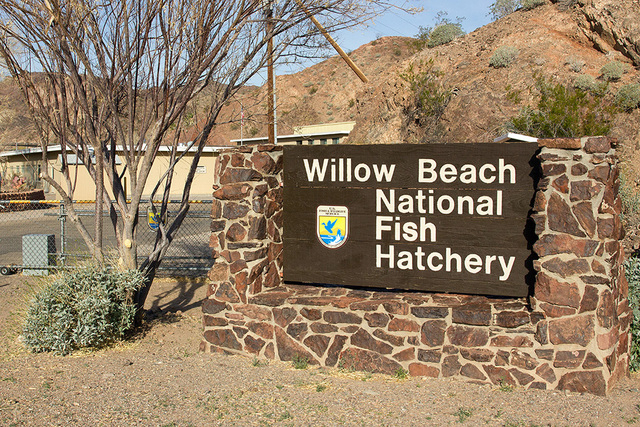Willow Beach National Fish Hatchery repairs offer hope for trout fishing

In recent weeks, readers have asked for a progress report on construction of the new water intake system at the Willow Beach National Fish Hatchery. Based on what I have learned, there is a chance that anglers could get trout plants in time for Christmas.
The U.S. Fish & Wildlife Service announced in fall 2013 it was ceasing all trout rearing operations at the Willow Beach facility after the loss of its cold-water intake system along with thousands of rainbow trout. That decision did not go over well with anglers nor with leaders from communities that benefit economically from trout fishing along the lower Colorado River.
In March 2015, the FWS, Arizona Game & Fish Department and Mohave County, Arizona, gave frustrated trout anglers hope by announcing they had reached an agreement that would restore Willow Beach trout rearing operations. That arrangement called for the installation of a new pump to supply cold water from the Colorado River to the hatchery’s trout raceways. The estimated cost of needed repairs and pump installation was about $776,000, to be shared by the FWS and AZGFD.
Today, another year and the design phase later, construction on the water intake is officially underway. According to Craig Springer, an external affairs officer with the FWS Southwest Region, “Construction on the intake started March 29, 2016, and is expected to be completed in early July. At that time, the hatchery should be ready to receive about 60,000 rainbow trout from the Arizona Game and Fish Department. These trout will be in the 5- to 6-inch range. They will need to grow in the hatchery until at least December before they will be ready to stock out.”
Although the hatchery will jump-start its operations with fish supplied by the AZGFD, plans call for eggs to arrive in early 2017. Those eggs will come from sources within the National Fish Hatchery System. Keep in mind that it can take a year or longer for a trout to grow from an egg to what fisheries biologists refer to as a catchable fish, so this is not an overnight process.
Springer said trout raised at Willow Beach probably will be released there and at other locations downstream from Davis Dam at Laughlin, but he didn’t know where the fish will be stocked.
The first plants of rainbow trout reared in the Willow Beach Hatchery occurred in 1962. Its location was selected to take advantage of the cold water released from Hoover Dam specifically to raise rainbow trout for sport fishing. At one time, trout raised in the facility were released at various locations along the Colorado River stretching from Lake Powell to Yuma, Arizona.
Historically, the Willow Beach Hatchery grew enough trout that it supported a year-round stocking schedule on the river just below the facility. Those plants took place weekly, but the FWS has yet to determine a stocking schedule once the hatchery resumes trout rearing operations. Nor has the agency determined which strain of rainbow trout will be raised at Willow Beach.
Springer did say the FWS has requested triploid trout, which means the fish will be sterile so they cannot reproduce in the system. States such as California use sterile rainbows in its recreational fishing program to help lessen the long-term impact on native fishes. The Alaska Department of Fish and Game stocks sterile rainbows so they won’t hybridize the wild fish population.
While there are never any guarantees of what you will find under the tree on Christmas morning, it looks as if there is a chance a new trout rod could come in handy for a trip to Willow Beach as early as December.
Freelance writer Doug Nielsen is a conservation educator for the Nevada Department of Wildlife. His “In the Outdoors” column, published Thursday, is not affiliated with or endorsed by the NDOW. Any opinions he states in his column are his own. He can be reached at intheoutdoorslv@gmail.com.